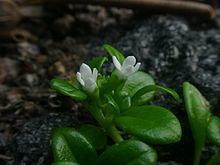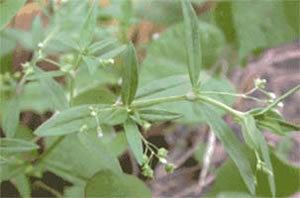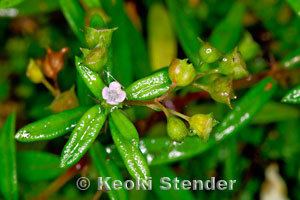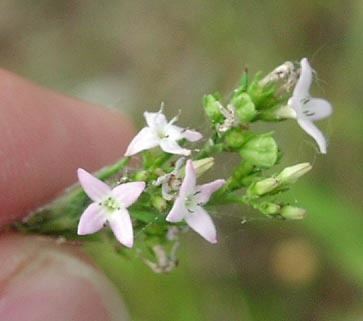Higher classification Spermacoceae | Scientific name Hedyotis | |
 | ||
Similar | ||
Hedyotis garden plants
Hedyotis (starviolet) is a genus of flowering plants in the family Rubiaceae. Many species of this genus such as Hedyotis biflora, H. corymbosa and H. diffusa are well known medicinal plants. The hedyotis is native to tropical and subtropical Asia and to islands of the northwest Pacific. It comprises about 115 Species. The type species for the genus is Hedyotis fruticosa.
Contents
- Hedyotis garden plants
- Medicinal rice p5l formulations for hedyotis excess pankaj oudhia s medicinal plant database
- Research
- References

Hedyotis was named by Linnaeus in 1753 in Species Plantarum. This generic name is derived from two Greek words, hedys, "sweet", and otos, "ear", in reference to the sweet-scented, ear-shaped leaves of some species.

Hedyotis was formerly defined very broadly by some authors, and included species now placed in Oldenlandia, Oldenlandiopsis, Houstonia, Kadua, and other genera. It is now circumscribed more narrowly, as a monophyletic group that is closely related to Agathisanthemum.

Species include:
Medicinal rice p5l formulations for hedyotis excess pankaj oudhia s medicinal plant database
Research

In the traditional medicine, over 20 Hedyotis species have been used for treatment of diseases and in healing practices. The most popular among these are Hedyotis diffusa and Hedyotis corymbosa which are active principles in several Chinese remedies such as bai hua she she cao, peh hue juwa chi cao and feibao syrup. They are taken for treatment of cancers, infections and other diseases. Phytochemical investigation of Hedyotis species was first published in 1933 upon examining the active components of the medicinal plant H. auricularia. Since then, over 50 novel compounds have been isolated from various member of the Hedyotis genus. These compounds have highly divergent structures including alkaloids, anthraquinones, flavonoids, iridoids, triterpenoids, sterols, lignans and a number of other compounds.

Recently, two novel biological active peptides, hedyotide B1 and B2 (hedyotide = hedyotis + peptide), have been isolated from the ariel parts of the medicinal plant Hedyotis biflora. H. biflora is a small annual herb traditionally used to treat body pain in fever and malaria. Both hedyotide B1 and B2 belong to the cyclotide superfamily which was known to be an important part of plant innate defense. Hedyotide B1 has a cyclic-cystine-knot motif and displayed potent broad-spectrum activities against many bacteria including E. coli, S. salivarius, S. aureus, P. aeruginosa, B. cereus and B. megaterium. Hedyotide B1 and cyclotides are likely to exerted their antimicrobial actions by disrupting the bacteria membranes which eventually leads to cell death. As they target directly bacterial membranes. it is unlikely for bacteria to develop resistance. Therefore, hedyotide B1 with a novel mode of action has potential as a novel antimicrobial agent against drug-resistance bacteria.

The genus Pleiocraterium was erected with Hedyotis verticillaris moved to it as P. verticillare along with the species, P. plantaginifolium (Arn.) Bremek. from Sri Lanka, P.sumatranum Bremek. and P. gentianifolium Bremek. both of Sumatra by Bremekamp. Molecular phylogenetic studies however have found this genus to nest within other representatives of the genus Hedyotis with little support for a separate genus.
